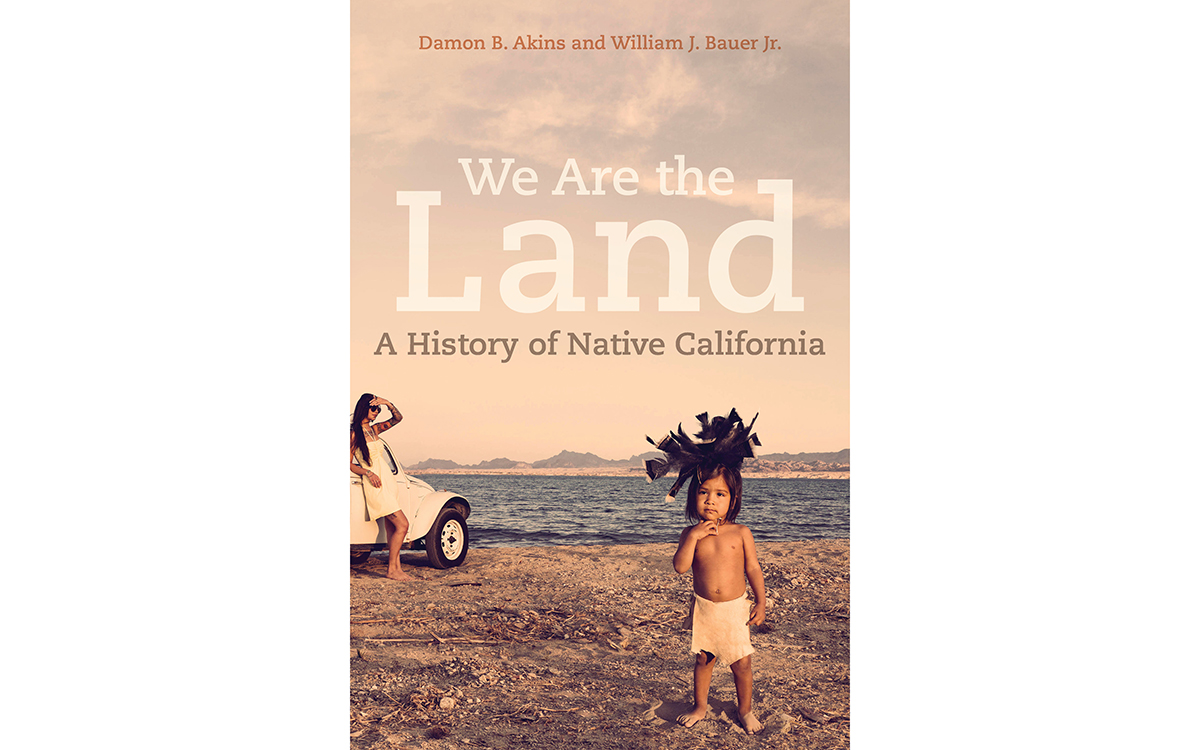When you write a history you begin at the beginning. Here’s how We Are the Land, A History of Native California by Damon Akins and William Bauer Jr., (University of California Press, 2021) introduces the Ensen people, who lived along the Salinas and Carmel rivers:
Coyote provided the People with rabbit nets and bow and arrows to hunt rabbits. Coyote then told the People to go to the ocean to gather seaweed, abalone, and mussels to eat with acorn mush and acorn bread. . . . "I have shown you how to gather food," Coyote said, "and even though it rains a long time, people will not die of hunger."
Coyote’s promise to the Ensen sparks a discussion of the centrality of acorns and oaks to California’s Indigenous People, including the Maidu, whose Earth Maker “created a tree on which twelve different kinds of acorns grew and planted it near the modern-day city of Durham, about eighty miles north of Sacramento.”
Clearly this is a radically different kind of history. In the norm, as articulated by 19th-century British imperialist Sir William Francis Butler (writing about the 1746 battle of Culloden, where British forces smashed the Scottish clan system), “It is the victor who writes the history and counts the dead.” In standard histories of California, its European and white American conquerors scarcely spare the state’s original inhabitants a footnote, let alone a proper tally of their mortality. When Akins and Bauer count the dead, they reckon that by 1910, “disease and murder” had reduced California’s Indigenous People to 25,000 from as many as a million in pre-Colonial times.

We Are the Land differs from familiar accounts both in the breadth of its scholarship and, most crucially, in its respect for and insistent inclusion of Native voices and stories. Against the deliberate settler campaign to simultaneously disappear and then romanticize those whose land had just been stolen, Akins and Bauer insist on Indigenous People’s agency—in sometimes covert efforts at cultural preservation, in carving out economic opportunities in the new capitalist order thrust on them (the most striking modern example of which is the spread of the casino system), or in outright resistance. In a note on their sources, the authors write, "Indigenous People have always been a presence in the documents on California and the Great Basin in the nineteenth century. They are usually there peripherally, however, as a generic threat to westward progress or victims to inevitable settler violence. Indigenous power is far less common in the sources."
The authors’ broader effort at sourcing yields a remarkably personal historical account, where Native People have their names and agency restored. "In 1811, Nazario, a cook at Mission San Diego, killed Father José Pedero Panto for giving him 124 lashes. In 1812, Julian and Donato led fourteen People in assassinating Father Andres Quintana at Mission Santa Cruz."
Assassinations of priests and other oppressors did not end well--this is, after all, the story of the vanquished. In the 1780s, a Tongva healer named Toypurina leads a revolt against the Mission San Gabriel:
Toypurina brought supernatural power to the Tongva rebellion. She prophesied that the soldiers and priests at Mission San Gabriel would be dead if the Tongva and their allies attacked. Following the successful assault on the mission, Toypurina foresaw the Tongva dividing the spoils of the mission, permitting the mission Indians to return to their towns, and continuing to practice their ceremonies. Events did not transpire as Toypurina hoped ...
Given that the historical record largely starts with white people’s arrival, a great deal of this story is a long, ugly encounter with White Supremacy in its various forms. These range from the sanctified slavery of the mission system to the outright genocide of the Gold Rush era (what a loathsome character John Sutter was) to the academic paternalism visited on the famous Ishi, “the Last Wild Indian.” (The authors recount how Ishi called famed University of California anthropologist Alfred Kroeber “‘Big Chief,’ but the lack of an F in Yahi rendered that ‘Big Cheap,’” which is how the authors cheekily refer to him thereafter.) "When Ishi succumbed to tuberculosis in San Francisco in 1916," that part of the story concludes, "his death accomplished both tasks non-Natives assigned to him: He was conquered, and the land was emptied."
The People persisted, though, surviving deportation to Indian boarding schools, improbably profiting from an early 20th-century craze for Indian basketry, and finding places during the Second World War as “factory workers, migrants, soldiers, sailors, and nurses.” The history continues up through yesterday, with the Ohlone people trying to reclaim their shellmound next to Berkeley’s tony Fourth Street shopping district, the place where Coyote “arrived after the flood and bore children with Eagle.”
We Are the Land is an astonishing work of scholarship, storytelling, and solidarity. Hopefully it will set the standard for the many other stories of the People waiting to be told.